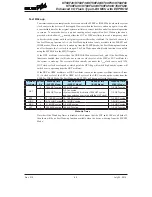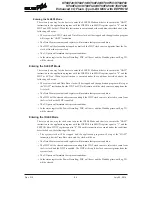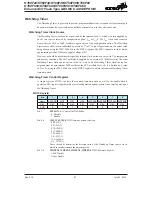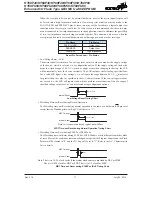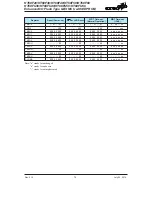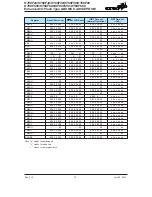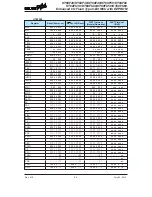
Rev. 2.10
6�
���� 02� 201�
Rev. 2.10
65
���� 02� 201�
HT68F20/HT68F30/HT68F40/HT68F50/HT68F60
HT68FU30/HT68FU40/HT68FU50/HT68FU60
Enhanced I/O Flash Type 8-Bit MCU with EEPROM
HT68F20/HT68F30/HT68F40/HT68F50/HT68F60
HT68FU30/HT68FU40/HT68FU50/HT68FU60
Enhanced I/O Flash Type 8-Bit MCU with EEPROM
Entering the IDLE1 Mode
There is only one way for the device to enter the IDLE1 Mode and that is to execute the "HALT"
instruction in the application program with the IDLEN bit in SMOD register equal to "1" and the
FSYSON bit in WDTC register equal to "1". When this instruction is executed under the with
conditions described above, the following will occur:
• The system clock and Time Base clock and f
SUB
clock will be on and the application program will
stop at the "HALT" instruction.
• The Data Memory contents and registers will maintain their present condition.
• The WDT will be cleared and resume counting if the WDT is enabled regardless of the WDT
clock source which originates from the f
SUB
clock or from the system clock.
• The I/O ports will maintain their present conditions.
• In the status register, the Power Down flag, PDF, will be set and the Watchdog time-out flag, TO,
will be cleared.
Standby Current Considerations
As the main reason for entering the SLEEP or IDLE Mode is to keep the current consumption of the
device to as low a value as possible, perhaps only in the order of several micro-amps except in the
IDLE1 Mode, there are other considerations which must also be taken into account by the circuit
designer if the power consumption is to be minimised. Special attention must be made to the I/O pins
on the device. All high-impedance input pins must be connected to either a fixed high or low level as
any floating input pins could create internal oscillations and result in increased current consumption.
This also applies to devices which have different package types, as there may be unbonbed pins.
These must either be setup as outputs or if setup as inputs must have pull-high resistors connected.
Care must also be taken with the loads, which are connected to I/O pins, which are setup as outputs.
These should be placed in a condition in which minimum current is drawn or connected only to
external circuits that do not draw current, such as other CMOS inputs. Also note that additional
standby current will also be required if the configuration options have enabled the LXT or LIRC
oscillator.
In the IDLE1 Mode the system oscillator is on, if the system oscillator is from the high speed
system oscillator, the additional standby current will also be perhaps in the order of several hundred
micro-amps.










